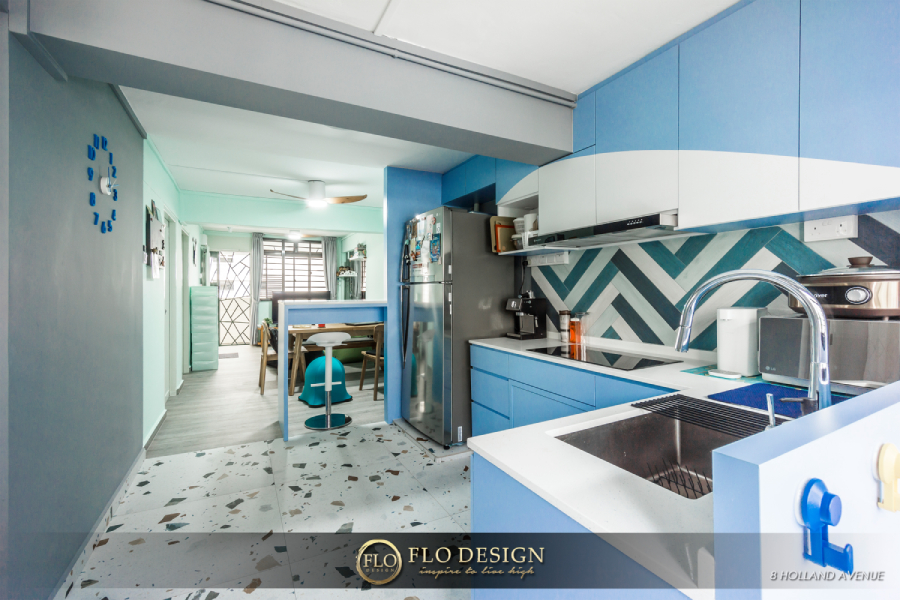
Creating the perfect music room requires a blend of aesthetic sensibility and acoustic functionality. Whether you're a professional musician, a hobbyist, or simply a music enthusiast, a well-designed music room can significantly enhance your experience and performance.
Here are some essential interior design tips to help you create the ideal music room.
1. Acoustic Treatment
Soundproofing
Soundproofing is crucial in ensuring your music room does not disturb the rest of your home (or your neighbours).
Hire interior design services in Singapore to add dense materials to walls, floors, and ceilings to block sound transmission. Consider installing mass-loaded vinyl, acoustic panels, or adding extra layers of drywall. Sealing gaps around doors and windows with acoustic caulk can also prevent sound leakage.
Acoustic Panels and Bass Traps
Once soundproofing is taken care of, focus on treating the room's acoustics. Acoustic panels help absorb sound reflections, reducing echo and reverb. Place these panels on walls, particularly at first reflection points. Bass traps in corners help control low-frequency sound waves, ensuring a balanced and clear audio environment.
2. Choosing the Right Room
Size and Shape
The size and shape of the room play a critical role in its acoustic properties. Rectangular rooms are preferable, as they help distribute sound more evenly. Avoid square or symmetrical rooms, as they tend to create standing waves that can distort sound.
Location
Ideally, choose a room that is away from high-traffic areas of your home. Basements are often good choices due to their natural isolation. If a basement is not an option, select a room with minimal external noise interference.
3. Flooring
Laying down area rugs can help balance sound reflections and reduce excessive brightness. However, you should avoid carpeting entire rooms, as it can overly absorb high frequencies and dull the sound.
4. Furniture and Layout
Essential Furniture
Depending on your musical needs, your furniture requirements will vary. Essential pieces include a comfortable chair or bench, music stands, storage for instruments, and perhaps a desk for music production equipment. Opt for furniture that combines functionality with aesthetic appeal.
Layout
The layout should facilitate easy movement and access to instruments. Place larger instruments like pianos or drum sets against the walls to utilise space efficiently. Ensure that there is adequate space for setting up microphones and other recording equipment if needed.
5. Lighting
Lighting can significantly impact the ambience of your music room. Natural light is ideal, so choose a room with windows if possible. Complement natural light with adjustable artificial lighting, such as dimmable overhead lights and task lamps. Avoid harsh fluorescent lighting, which can be distracting and unflattering.
6. Colour Scheme and Decor
The colour scheme of your music room can influence your mood and creativity. Warm colours like reds, oranges, and yellows can create an inviting and energetic atmosphere. Cooler colours like blues and greens promote relaxation and focus. Neutral colours like white, grey, and beige are versatile and can be accented with vibrant decor.
Incorporate music-themed decor to personalise your space. Framed posters of your favourite artists, album covers, and musical instruments mounted on walls can add character. However, avoid cluttering the room, as this can interfere with acoustics and create a distracting environment.
7. Climate Control
Maintaining a consistent temperature and humidity level is crucial for preserving musical instruments. Extreme temperatures and humidity fluctuations can damage wood and metal components. Invest in a good HVAC system, and consider using a humidifier or dehumidifier to keep the room's humidity at a comfortable level.
8. Technology and Equipment Integration
Sound Systems
For those who enjoy listening to music in their music room, a high-quality sound system is essential. Invest in good speakers and amplifiers, and consider the placement carefully to ensure even sound distribution. Mounting speakers on stands or walls can help optimise acoustics.
Recording Equipment
If your music room doubles as a recording studio, ensure that your recording equipment is easily accessible. This includes microphones, audio interfaces, computers, and monitors. Organise cables using cable management solutions to avoid a tangled mess that can hinder your workflow.
9. Versatility and Adaptability
A versatile music room can serve multiple purposes, from practice to recording to casual listening. Design the room to be adaptable by using modular furniture that can be easily rearranged. This flexibility allows you to modify the room layout based on your current needs.
10. Incorporating Green Elements
Adding plants to your music room can enhance both aesthetics and acoustics. Plants help absorb sound, reducing echo, and they also improve air quality, making the room a healthier space. Choose low-maintenance plants that thrive indoors like peace lilies and pothos.
Conclusion
Creating the perfect music room involves balancing acoustics, functionality, and aesthetics. By focusing on soundproofing, choosing the right room, selecting appropriate flooring and furniture, and integrating technology, you can design a space that enhances your musical experience. Consider lighting, colour schemes, and climate control to create an environment that is not only functional but also inspiring. With these tips, you can transform any space into a music room that meets your needs and fuels your passion for music.
Ready to create the music room of your dreams? Reach out to us at Flo Design—we provide landed, HDB, and condo unit interior design in Singapore. Contact us for more information.




